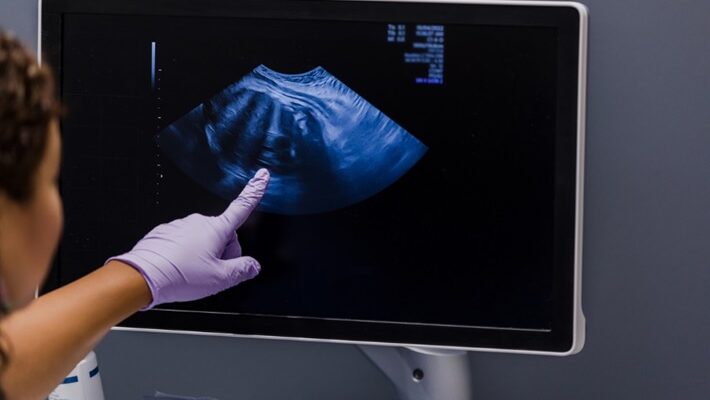
The advancement of technology has revolutionized various industries, including the healthcare sector. In particular, technology has immensely impacted family nurse practitioner (FNP) practice, transforming how healthcare providers deliver care to their patients and their family. With the increasing adoption of electronic health records, telehealth and other digital tools, FNPs can now provide efficient, accurate, patient-centered care.
This article will explore how technology has transformed FNP practice, discussing the benefits and challenges of incorporating technology into daily workflows. We will also examine future technological developments that could further revolutionize FNP practice and improve patient outcomes. Whether you are an FNP, a healthcare provider or a patient, this article will provide valuable insights into the impact of technology on FNP practice and its role in improving healthcare delivery.
What is an FNP?
FNPs are healthcare professionals who specialize in providing primary care to patients of all ages, from infancy to adulthood. To become an FNP, an individual must first obtain a Bachelor of Science in Nursing (BSN) degree and pass the National Council Licensure Examination (NCLEX) to become a registered nurse (RN). After gaining some experience in the field, they can then pursue a Master of Science in Nursing (MSN) degree with a focus on family practice.
One of the most convenient ways to earn an MSN degree as an FNP is through an online program. It is worth noting that a Master of Science in Nursing Family Nurse Practitioner online degree, such as the course offered by Texas Woman’s University, offers flexibility and accessibility, allowing students to complete coursework and clinical hours at their own pace and from anywhere with an internet connection. Pursuing an MSN FNP degree can also be personally fulfilling for nurses passionate about providing high-quality care to patients and families. FNP programs focus on holistic care, patient education and disease prevention, which can be rewarding for nurses who want to make a difference in their patients’ lives.
Overview of technology in FNP practice
Technology has become an integral part of the modern healthcare system, and its integration into FNP practice has the potential to improve patient care, increase efficiency and reduce costs. Below are some of the ways that technology is used in FNP practice.
Electronic health records (EHRs)
EHRs are digital versions of patients’ medical records that allow healthcare providers to access patient information easily. FNPs can use EHRs to document patient visits, track medications and monitor patient progress. This software can also enable the sharing of patient information between healthcare providers, allowing for a more coordinated and efficient healthcare system. Likewise, EHRs provide easy access to patient histories, test results and medication lists, and can help them make more informed decisions about patient care.
Telehealth
Telehealth allows healthcare providers to conduct virtual visits with patients, reducing the need for in-person visits and increasing access to care for patients who live in rural or remote areas. It can also be used for remote patient monitoring, allowing FNPs to monitor patient health status and intervene when necessary. Telehealth also provides a convenient and efficient way for patients to receive care, as they can schedule appointments, receive care and access their medical records from the comfort of their homes.
Mobile health
Patients can use mobile apps to communicate with their FNPs, schedule appointments and access medical records. This also helps FNPs track patients’ health, monitor symptoms and provide educational resources. Mobile health technologies can also promote healthy behaviors and self-management among patients, such as reminding patients to take their medications or providing educational materials on healthy eating habits.
Clinical decision support systems (CDSS)
CDSS are software tools that assist healthcare providers in making clinical decisions based on patient data and evidence-based guidelines. CDSS are used by FNPs to quickly and accurately diagnose and treat patients, reducing the risk of medical errors and improving patient outcomes. For example, CDSS may alert an FNP if a patient’s medication regimen is contraindicated based on their medical history or if a test result indicates a potential health concern.
Health information exchange (HIE)
An HIE allows for sharing of patient information between healthcare providers and organizations, improving care coordination and reducing duplication of services. FNPs can use an HIE to access patient data from other healthcare providers, enabling them to make more informed decisions about patient care. An HIE also allows healthcare providers to share critical patient information in emergencies, which can be lifesaving.
Remote patient monitoring (RPM)
RPM allows healthcare providers to monitor patients’ health status and intervene when necessary remotely. RPM technologies can include wearable devices, mobile apps, and other remote monitoring tools that collect patient data and transmit it to healthcare providers. RPM can be handy for patients with chronic conditions or those who require ongoing monitoring, allowing FNPs to detect potential health issues early and intervene before they become more serious.
Benefits of technology in FNP practice
As technology continues to advance at a rapid pace, it has transformed many aspects of our lives, including healthcare. FNPs are among the healthcare professionals significantly benefiting from technological advancements. Here are the different ways that technology has transformed the FNP practice.
Improved accuracy in diagnosis and treatment
Technology has made it easier for FNPs to access patient data and EHRs, allowing them to diagnose and treat patients more accurately. With advanced diagnostic tools, such as CT scans and MRIs, FNPs can quickly detect diseases and other medical conditions that were once difficult to diagnose.
Enhanced communication between FNPs and patients
Technology has greatly aided FNPs and their patients through the help of telehealth services and video conferencing. FNPs can now communicate with their patients from the comfort of their homes. This technology has eliminated the need for patients to travel to the clinic physically, thereby reducing the time and cost associated with in-person visits. Additionally, telemedicine technology has enabled FNPs to monitor patients, ensuring that they receive timely care when needed remotely. This has particularly benefited patients with chronic conditions requiring continuous monitoring and care.
Increased efficiency in recordkeeping and scheduling
Technology has made it easy for FNPs to keep accurate and up-to-date patient records. This technology has eliminated the need for paper-based records, which are often lost or damaged. Additionally, electronic scheduling systems have made it easier for FNPs to manage their schedules efficiently. Scheduling software also makes it easier for patients to book appointments with their FNPs, and for FNPs to manage their schedules.
Better access to medical information and research
With the help of online databases and medical journals, FNPs can stay up to date with the latest medical advancements and research. This knowledge enables them to provide patients with the most effective and efficient care possible. Additionally, technology has made it easier for FNPs to consult with other healthcare professionals, enhancing their ability to provide quality patient care.
Cost-effectiveness
One of the most effective benefits of technology in FNP practice is its cost-effectiveness. Telemedicine technology has enabled FNPs to monitor and treat patients remotely, eliminating the need for expensive hospital visits. Additionally, electronic health records (EHRs) and scheduling software have streamlined administrative tasks, reducing the need for paper records and manual scheduling. This translates to cost savings for both patients and healthcare providers, making it easier for patients to access affordable care.
Increased access to care
Telemedicine technology has enabled patients to connect with their FNPs remotely, eliminating the need for travel. This is particularly beneficial for patients who live in rural areas and who may not have easy access to healthcare. In addition, patient portals have made it easier for patients to access their medical information and communicate with their FNPs. This means that patients can receive timely care and support, even if they cannot visit their FNP in person. By increasing access to care, technology helps ensure patients receive the care they need when needed.
Challenges of technology in FNP practice
While technology has the potential to greatly benefit FNP practice, several challenges come with its use. Below are some of the main challenges that FNPs may face when integrating technology into their practice.
Training and education
While technology has the potential to revolutionize FNP practice, it can only do so if FNPs have the proper training and education to use it effectively. This includes not only technical training but also training on integrating technology into clinical workflows and maintaining patient privacy and confidentiality. Without adequate training, FNPs may struggle to use new technologies, which can impede their ability to provide high-quality care and negatively impact patient outcomes.
Data security and privacy
Protecting patient data is a critical concern for FNPs, as breaches can seriously harm patients and lead to legal and financial consequences for providers. Ensuring that patient data is secure and protected from unauthorized access requires ongoing attention and investment in cyber security measures. FNPs must also comply with privacy regulations such as the Health Insurance Portability and Accountability Act (HIPAA) to ensure that patient data is handled appropriately.
Cost
Implementing new technologies can be expensive, particularly for small practices or those in under-resourced areas. FNPs must carefully consider the costs and benefits of new technologies and make difficult decisions about which technologies to invest in and how to allocate resources to support their use. This can be challenging, as many new technologies are constantly emerging, making it difficult for FNPs to keep up with the latest developments.
Patient engagement and adoption
Technology is only effective if patients are willing and able to use it. FNPs may face challenges in engaging patients and encouraging them to adopt new technologies, particularly among populations resistant or with limited access to technology. To overcome this challenge, FNPs must be creative in their approaches to patient engagement and education and must work to understand and address patients’ concerns and barriers to adoption.
Resistance to change
Resistance to change is a common challenge in healthcare, as it can be difficult to convince stakeholders to adopt new technologies or approaches. This can be particularly true for older or more traditional practitioners who may be skeptical of new technologies. To overcome resistance to change, FNPs must engage in effective communication, education and training and demonstrate the potential benefits of new technologies through concrete examples and outcomes.
Overreliance on technology
While technology can be an effective tool, overreliance on it can be a concern. FNPs must be mindful of the potential for technology to replace human judgment and intuition, which can negatively impact patient care. FNPs must balance technology and traditional clinical practices to avoid overreliance on technology, leveraging technology to enhance and support, rather than replace, their clinical decision-making.
Ethical considerations in the use of technology in FNP practice
As with most other health sectors, the use of technology in FNP practice raises important ethical considerations, including the following.
Informed consent
FNPs must make sure that patients understand how their data will be used and who can access it. This includes ensuring that patients know the potential risks and benefits of using technology in their care.
Privacy and confidentiality
FNPs are responsible for protecting patient privacy and confidentiality, including the security of patient data. This includes complying with regulations such as HIPAA and taking steps to prevent breaches or unauthorized access to patient information.
Bias and discrimination
FNPs must be aware of the potential for technology to perpetuate biases or discriminatory practices. This includes ensuring that algorithms used in clinical decision support systems are not biased and that technology is not used to discriminate against certain patient populations.
Quality of care
The use of technology should not compromise the quality of care provided to patients. FNPs must ensure that technology is used appropriately and does not negatively impact patient care.
Professional boundaries
FNPs must maintain professional boundaries when using technology in patient care. This includes ensuring that technology is not used inappropriately to blur the boundaries between personal and professional relationships with patients.
Autonomy and consent
FNPs must ensure that patients are fully informed about the use of technology in their care and have the right to refuse or withdraw their consent to its use.
The future of technology in FNP practice
In recent years, technology has advanced unprecedentedly, transforming how healthcare is delivered and managed. As a result, the future of technology in healthcare, particularly in FNP practice, is filled with exciting developments that have the potential to revolutionize patient care.
Advancements in artificial intelligence and machine learning
Artificial intelligence (AI) and machine learning are rapidly advancing and have already been utilized in healthcare to assist with medical diagnosis and treatment planning tasks. With the ability to process vast amounts of data and recognize patterns, AI has the potential to enhance the accuracy and efficiency of healthcare delivery. Additionally, machine learning algorithms can identify patients at high risk of developing certain health conditions, allowing for early intervention and prevention.
Wearable technology and remote monitoring devices
Wearable technology and remote monitoring devices, such as smartwatches and fitness trackers, are becoming increasingly popular and offer valuable insights into patients’ health status. These devices can track vital signs, physical activity and sleep patterns, among other things, providing a wealth of data for FNPs to analyze and interpret. This technology can enable FNPs to monitor patients remotely and intervene when necessary, improving patient outcomes and reducing the need for in-person visits.
Patient portals and personal health records
Patient portals and personal health records (PHRs) are secure online platforms that allow patients to access and manage their health information. These portals enable patients to schedule appointments, request medication refills and communicate with healthcare providers. Patient portals and PHRs can enhance patient engagement and promote more personalized care by providing patients with greater control over their healthcare information.
Blockchain and healthcare
Blockchain technology can transform healthcare by providing a secure and transparent system for managing and sharing health data. Blockchain can ensure that patient data is secure, private and only accessible to authorized individuals. This technology can also enable more efficient sharing of health data between healthcare providers, enhancing care coordination and improving patient outcomes.
Virtual reality and augmented reality
Virtual reality (VR) and augmented reality (AR) technologies are increasingly used in healthcare education and training, providing a safe and controlled environment for learning complex procedures and scenarios. VR and AR can improve patient education and engagement, providing immersive experiences that help patients better understand their health conditions and treatment options.
Conclusion
In conclusion, technology has greatly impacted the practice of FNPs by improving patient care, streamlining communication with other healthcare providers, and increasing access to information. As technology continues to advance, it is important for FNPs to stay up to date with these advancements to provide the best possible care to their patients.











